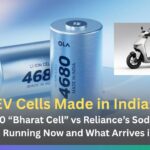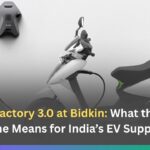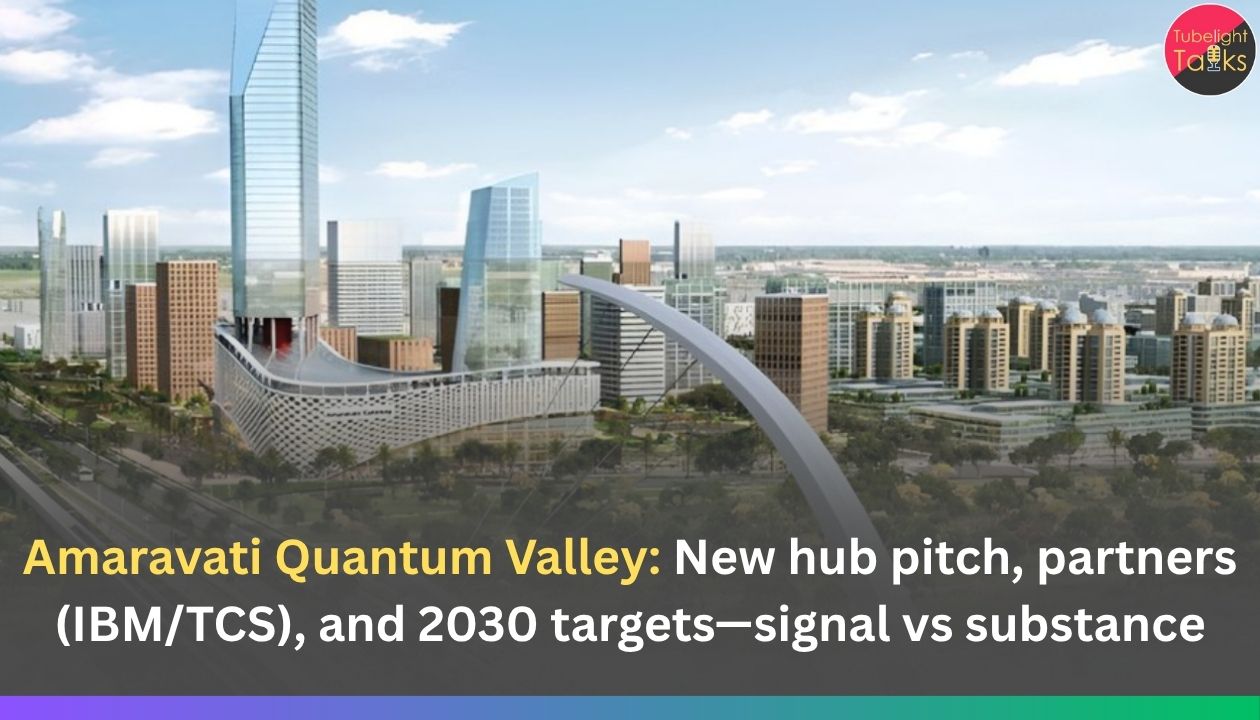EV Cells Made in India: India’s EV transition hinges on cells—not just packs. Two big storylines now converge: Ola Electric has secured ARAI certification for its in-house 4680 “Bharat Cell” battery pack and quietly launched a battery energy storage (BESS) product line, while Reliance is pushing sodium-ion cell commercialisation alongside LFP, targeting a 40 GWh Jamnagar gigafactory in 2026.
Below is a clear, source-linked breakdown of what’s official, the chemistry trade-offs, jobs & exports, supply-chain gaps, and a 90-day watch-list—plus a brief ethics note so growth stays responsible.
What’s officially live (and certified)
Ola’s 4680 “Bharat Cell” battery pack clears ARAI
- Certification: Ola’s indigenously developed 4680 Bharat Cell battery pack (5.2 kWh) has received ARAI certification under AIS-156 Amendment 4—the latest safety regime notified by the Ministry of Road Transport & Highways. Multiple outlets and trade journals reported the approval on Oct 28, 2025.
- On-vehicle deployment: Coverage since early November indicates deliveries of scooter variants using the 4680 pack have begun, signalling start of field ramp.
Ola’s BESS play begins with “Ola Shakti”
- Home storage: Ola has listed Ola Shakti, a portable home battery/solar backup system powered by the 4680 Bharat cell, marking its move into stationary storage. Company materials also pitch grid-adjacent use cases.
- Capacity ramp (company guidance): Recent reporting pegs Ola’s cell capacity at ~2.5 GWh commissioned (Q2 FY26), with a glidepath to ~5.9 GWh by Mar 2026 and ~20 GWh by FY27, part of which feeds the BESS line. (Company statements via business media.)
Reliance sets 2026 clock on Jamnagar cell gigafactory
- Official roadmap: Reliance’s New Energy & Materials page reiterates a battery gigafactory by 2026 to make battery chemicals, cells, packs, containerised storage and run recycling—with LFP first and sodium-ion fast-tracked.
- Scale: Multiple energy trade outlets summarise a 40 GWh initial capacity in 2026, modularly expandable to 100 GWh, as conveyed during RIL’s AGM commentary.
- Schedule context: Business press has noted timeline extensions under India’s ACC-PLI scheme even as the 2026 target stands.
Chemistry face-off: 4680 NMC vs Sodium-Ion (and LFP)
4680 (cylindrical) in simple terms
- What it is: A 46×80 mm cylindrical cell format popularised for high energy density and fast manufacturing. Ola’s pack uses 4680-format cells, integrated into AIS-156 Amd.4-compliant modules/packs.
- Pros: High Wh/L and Wh/kg potential; good power delivery; mature thermal pathways in cylindrical designs.
- Cons: Typically NMC chemistry → higher nickel/cobalt exposure (cost & sourcing), though pack design/thermal management and safety testing mitigate on-road risk.
Sodium-ion—why Reliance is bullish
- What it is: Na-ion substitutes sodium for lithium; lower material cost, strong low-temperature performance, and inherently safer cathodes.
- Pros: Cost-down potential; cobalt/nickel-free; excellent for stationary storage and urban two-wheelers/three-wheelers where volumetric density demands are moderate.
- Cons: Lower energy density vs NMC/LFP today; requires new supply chain (anodes, electrolytes, separators) tuned to Na-ion.
- Status: Reliance—after acquiring UK-based Faradion—says it is fast-tracking sodium-ion commercialisation as part of the 2026 Jamnagar complex alongside LFP.
Where LFP sits
- Role: LFP (LiFePO₄) is the workhorse for cost-effective, long-life, safer EV packs and BESS. Reliance positions LFP for “world-beating lifecycle costs” at Jamnagar while sodium-ion scales.
Market impact: two paths to localisation
Vehicles first, grid next (Ola)
- Two-wheeler moat: ARAI-cleared 4680 packs give Ola headroom on range and performance in premium scooters. Initial deployments create a feedback loop to improve yield/quality before wider OEM sales.
- BESS adjacency: Ola Shakti seeds a stationary line powered by the same cell family—useful for rooftop PV backup and time-of-day shifting in homes/SMEs.
Grid-scale first, mass platforms next (Reliance)
- Containerised storage: Jamnagar’s scope includes containerised BESS—a natural first home for LFP and, later, sodium-ion given cost and safety.
- Auto after ramp: As Na-ion improves, expect pilots in 2W/3W fleets and city buses where overnight depot charging and moderate energy density suffice.
Jobs, capex & exports—what to expect into 2026
- Employment: Gigafactories of 20–40 GWh typically employ thousands directly (operators, quality, maintenance) and many more in logistics and materials; Reliance cites cells + packs + recycling under one campus, raising services and O&M headcount.
- Export option: Both cells and containerised BESS are exportable; timing depends on yield and safety certifications at scale.
- Domestic substitution: As 4680/Na-ion/LFP production stabilises, India reduces import dependence on cells, packs, and eventually battery chemicals.
Supply-chain realities (the gaps to close)
- Cathode/anode materials: Full backward integration (precursors, binders, foils) will lag cell assembly in 2026; Jamnagar’s battery chemicals line is intended to narrow the gap.
- Separators/electrolytes: Na-ion requires distinct formulations; vendor development is in progress globally.
- Recycling: Reliance’s plan includes recycling; India needs robust black-mass and metal recovery capacity for closed-loop economics.
Safety & compliance—why the certifications matter
- AIS-156 Amd.4: India’s upgraded EV-battery safety standard adds stricter thermal-runaway, vibration, water ingress, and charge safety tests. Ola’s ARAI clearance under this regime is a high bar for local packs.
- BESS standards: Stationary systems must meet IS/IEC safety norms (isolation, fire detection/suppression); watch for BIS/CEA circulars as BESS deployments scale.
What to track next
- Ola: production-volume disclosures for 4680 cells; more scooter SKUs using the certified pack; Ola Shakti retail roll-out (specs, pricing).
- Reliance: Jamnagar civil/MEP milestones, pilot lines, chemistry announcements (LFP vs Na-ion first output), and containerised BESS orders.
- Policy: ACC-PLI tranche updates and state-level incentives for ancillaries (separators, copper foil, binders).
Progress with a Moral Circuit
As India races to scale EV cells and BESS, Sant Rampal Ji Maharaj’s guidance truthfulness, non-harm, service, and restraint—offers a practical checklist: be truthful with safety and performance logs (AIS-156 outcomes, thermal incidents, energy/kWh produced); design for non-harm by prioritising safer chemistries and end-of-life recycling; practise service by reserving affordable storage solutions for rural clinics, schools, and MSMEs that face the sharpest outages; and show restraint in sourcing and data—cut cobalt risks where possible, minimise environmental footprint, and keep customer telemetry strictly opt-in.
The result is battery progress that powers growth without short-circuiting people or the planet. For deeper context, see jagatgururampalji.org, the official YouTube channel.
Call to Action
For buyers & fleets
What to check now
- Ask for AIS-156 Amd.4 compliance and warranty specifics (cycle life, calendar life).
- For BESS, confirm fire safety features, service SLAs, and recycling take-back.
For policymakers & industry
Converting momentum into depth
- Accelerate upstream materials investments (LFP precursors, Na-ion electrolytes) and recycling permits.
- Tie incentives to independent safety audits, energy budgets, and local R&D.
Read Also: The Rise of Digital India: How Technology Is Empowering Every Citizen
FAQs: EV Cells Made in India
1) What exactly did ARAI approve for Ola?
A 5.2 kWh battery pack built on 4680 Bharat Cell tech, certified under AIS-156 Amendment 4—the latest Indian EV-battery safety standard.
2) Is Ola already shipping vehicles with the 4680 pack?
Yes—media and local language reports indicate deliveries have begun for scooter variants using the 4680 pack.
3) What is Ola’s BESS product?
Ola Shakti is a portable home battery/solar backup system powered by the 4680 Bharat cell; it marks Ola’s entry into stationary storage.
4) What will Reliance make in 2026?
Reliance targets a battery gigafactory in Jamnagar by 2026 making cells, packs, containerised storage and running recycling, with LFP first and sodium-ion fast-tracked to market. Initial capacity guidance is ~40 GWh.
5) Sodium-ion vs 4680 (likely NMC): which is better?
They serve different jobs: 4680/NMC prioritises energy density for long-range vehicles; sodium-ion offers lower cost and safer, cobalt-free chemistry ideal for BESS and mass-market EVs with moderate range. Over time, improvements in Na-ion could broaden its EV roles.










